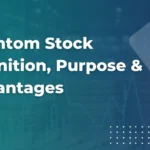Structured Investment Products: The Complete Guide for Investors
Structured Investment Products (SIPs) are pre-packaged investments that combine traditional assets, like bonds or stocks, with derivatives. They are designed to meet specific financial goals, such as capital protection, enhanced returns, or exposure to niche markets.
In today’s world of investing, where everyone is looking for customized solutions, Structured Investment Products (SIPs) have emerged as a popular choice. These products are designed to cater to a wide range of investment goals like capital protection, enhanced returns, or exposure to niche markets.
In this article, we will break down everything you need to know about SIPs. From understanding what they are, how they work, and their benefits, to real-world examples and potential risks.
Key Takeaways About Structured Investment Products
- Tailored Investment Solutions: SIPs are designed to meet specific financial objectives, offering options like capital protection, yield enhancement, or exposure to asset classes such as stocks, bonds, and commodities.
- Blend of Traditional and Derivative Instruments: SIPs combine low-risk assets (e.g., bonds) with derivatives (e.g., options or swaps), creating payoff structures that balance downside protection with upside potential.
- Diverse Product Options: Investors can choose from capital-protected notes, yield-enhancement products, participation products, and leverage products to suit their risk tolerance and market outlook.
- Consideration of Risks: SIPs’ complexity and potential illiquidity, along with their reliance on underlying assets and issuer creditworthiness, require careful evaluation.
- Best for Informed Investors: These products are most suitable for knowledgeable investors or those guided by financial advisors to integrate SIPs into broader investment strategies effectively.
What Are Structured Investment Products (SIPs)?
Structured Investment Products are pre-packaged investments that combine traditional financial instruments (like bonds or stocks) with derivatives. These products are created by financial institutions to provide specific returns, often tailored to an investor’s risk tolerance, goals, or market expectations.
For example, imagine you want to invest in the stock market but are worried about losing your money. A structured product could offer you the opportunity to earn returns based on stock market performance while guaranteeing that you won’t lose your initial investment (capital protection).
Key Features of Structured Investment Products
SIPs are not your average investments. Here’s what makes them unique:
1. Customization
These products are tailored to meet individual or institutional needs. Whether you want high returns, downside protection, or market-linked growth, there’s likely a structured product for you.
2. Underlying Assets
Structured products can be linked to various assets like:
- Stocks
- Bonds
- Commodities (e.g., gold)
- Indices (e.g., S&P 500)
- Currencies (e.g., USD/EUR)
3. Use of Derivatives
The magic of structured products lies in their use of derivatives. Options, swaps, and futures are used to create unique payoffs based on the performance of underlying assets.
4. Fixed Maturity
SIPs have a predefined time frame—ranging from a few months to several years. At maturity, you receive the structured payout based on the product’s terms.
5. Risk and Reward Balance
You can opt for a product that suits your risk tolerance. Some offer capital protection with limited upside, while others provide high risk and potentially higher returns.
How Do Structured Investment Products Work?
At their core, SIPs combine a low-risk component (like a bond) with a high-risk component (like a derivative). Here’s a simple breakdown:
- The Bond Component: A portion of your investment goes into a bond, which grows over time to guarantee your initial capital.
- The Derivative Component: The rest is used to buy derivatives, which determine the potential upside based on market performance.
Example: Principal-Protected Note
Imagine you invest $1,000 in a principal-protected structured note:
- $900 is invested in a zero-coupon bond that will mature at $1,000 in five years (protecting your principal).
- $100 is used to buy a call option on the S&P 500.
If the S&P 500 rises, you earn additional returns. If it falls, you still get your $1,000 back.
Types of Structured Investment Products
Not all SIPs are created equal. They come in various forms, depending on what investors want to achieve:
1. Capital-Protected Products
- What They Do: Guarantee your initial investment while offering potential upside.
- Example: A product linked to a stock index but with 100% principal protection at maturity.
2. Yield Enhancement Products
- What They Do: Offer higher returns but come with increased risk.
- Example: Reverse convertible bonds that provide high yields but may convert into equity if the stock price falls below a certain level.
3. Participation Products
- What They Do: Provide direct or leveraged exposure to an asset.
- Example: Equity-linked notes tied to the performance of a stock index.
4. Leverage Products
- What They Do: Offer magnified exposure to market movements.
- Example: Turbo certificates that amplify gains (or losses) on a stock or index.
How do SIPs differ from mutual funds?
SIPs offer customized payoffs using derivatives and are linked to specific terms, while mutual funds provide broader diversification without customized returns.
Advantages of Structured Investment Products
1. Tailored Solutions
One size doesn’t fit all, and SIPs allow investors to choose products that match their financial goals, whether it’s growth, income, or capital preservation.
2. Capital Protection
Many structured products offer downside protection, making them attractive for conservative investors.
3. Access to Complex Strategies
Through SIPs, individual investors can gain exposure to advanced financial techniques typically reserved for institutions.
4. Diversification
By linking to multiple asset classes, structured products can help diversify your portfolio.
5. Enhanced Returns
Yield enhancement products provide the potential for higher returns compared to traditional investments.
Risks of Structured Investment Products
Before diving into SIPs, it’s essential to understand the risks involved:
1. Complexity
The structure and payoffs of these products can be challenging to understand, especially for retail investors.
2. Market Risk
If the underlying asset performs poorly, the returns may be lower than expected.
3. Credit Risk
SIPs are issued by financial institutions, so if the issuer defaults (e.g., during a financial crisis), you could lose your investment.
4. Liquidity Risk
Many structured products lack a secondary market, making it difficult to sell before maturity.
5. High Fees
Hidden costs like management fees or derivative premiums can erode returns.
Who Should Invest in Structured Investment Products?
SIPs are not for everyone. They are best suited for:
- Conservative Investors: Looking for capital protection.
- Moderate Risk-Takers: Interested in balanced risk-return profiles.
- Experienced Investors: Comfortable with complex financial instruments.
Real-World Examples
Example 1: Equity-Linked Note
- Structure: $1,000 invested in a bond + a call option on Tesla stock.
- Outcome: If Tesla’s stock rises, you earn additional returns. If it falls, your $1,000 principal is protected.
Example 2: Reverse Convertible Bond
- Structure: A bond paying high interest, linked to Apple stock.
- Outcome: If Apple’s stock stays above $150, you earn the interest and get your principal back. If it falls below $150, you may receive Apple shares instead.
How to Evaluate a Structured Product
Before investing, ask yourself:
- What are my financial goals?
- What is the risk-reward profile of this product?
- Who is the issuer, and are they financially stable?
- What fees are involved?
- Can I hold the product until maturity?
Regulatory Considerations
Structured products are regulated to ensure transparency and protect investors:
- In the U.S.: Overseen by the SEC and FINRA.
- In Europe: Governed by MiFID II rules.
Always review the product’s prospectus to understand the risks and terms.
The Future of Structured Investment Products
The world of structured products is evolving rapidly:
- Digitization: Online platforms are making SIPs more accessible.
- Green Investments: SIPs linked to ESG (Environmental, Social, Governance) indices are gaining popularity.
- AI Integration: Artificial intelligence is helping design innovative payoffs.
Conclusion
Structured Investment Products offer a world of opportunities for investors who are looking for tailored solutions. From capital protection to yield enhancement, these products can cater to diverse financial needs. However, their complexity and risks mean they require a solid understanding and careful evaluation before investing.
By now, you should have a comprehensive understanding of structured products, how they work, their benefits, and their risks. Whether you’re a seasoned investor or someone exploring new options, SIPs can be a valuable addition to your portfolio when used wisely.
If you’re ready to explore structured products, consult a trusted financial advisor and start planning your investment strategy today!
FAQs About Structured Investment Products (SIPs)
1. What are Structured Products (SIPs)?
Structured Investment Products (SIPs) are pre-packaged financial instruments that combine traditional investments (like bonds or stocks) with derivatives to provide tailored returns based on specific market conditions and investor goals.
2. How do SIPs work?
SIPs typically involve two components:
A low-risk component (like a bond) that may offer principal protection.
A derivative component (like options) that determines the returns based on the performance of an underlying asset, such as a stock index or commodity.
For example, a principal-protected note may return your initial investment plus a portion of the gains from an index.
3. What are the different types of SIPs?
The main types include:
Capital-Protected Products: Guarantee the return of your initial investment at maturity.
Yield Enhancement Products: Offer higher income but with greater risk.
Participation Products: Provide direct or leveraged exposure to market movements.
Leverage Products: Magnify returns (and risks) with leveraged exposure.
4. Are Structured Investment Products safe?
The safety of SIPs depends on:
Issuer Credit Risk: If the issuer (e.g., a bank) defaults, you could lose your investment.
Market Risk: Returns are tied to the performance of the underlying asset.
Complexity: Understanding the structure and terms is crucial to assessing safety.
Capital-protected products are relatively safer but may offer limited returns.
5. Can I lose money with SIPs?
Yes, depending on the type of product:
Capital-Protected SIPs: You usually get your principal back at maturity, but inflation and fees might reduce real returns.
Non-Protected SIPs: You could lose some or all of your investment if the underlying asset performs poorly.
6. Are SIPs liquid?
Most SIPs are designed to be held until maturity. While some may have a secondary market, liquidity can be limited, and selling early might result in losses
7. Who are SIPs suitable for?
SIPs are best suited for:
Conservative investors: Seeking capital protection with some market exposure.
Moderate risk-takers: Interested in balanced risk-reward profiles.
Sophisticated investors: Understanding complex financial instruments and risks.
8. What are the risks of investing in SIPs?
Key risks include:
Issuer Credit Risk: If the issuing bank or institution defaults.
Market Risk: Dependent on the performance of underlying assets.
Liquidity Risk: Difficulty selling before maturity.
Fee Structures: Hidden costs can erode returns.
Complexity: Terms may be difficult for retail investors to understand.
9. What are some examples of SIPs?
Principal-Protected Note: Combines a bond and a call option on a stock index.
Reverse Convertible Bond: Offers high yields but may convert to equity if a stock price falls below a certain threshold.
10. How do I evaluate an SIP before investing?
Consider these factors:
Your Goals: Are you seeking growth, income, or capital protection?
Risk Profile: Does the product align with your risk tolerance?
Issuer Creditworthiness: Can the issuer meet its obligations?
Fees: Understand all costs involved.
Market Conditions: Is the underlying asset likely to perform well?
11. How are SIPs regulated?
SIPs are regulated to ensure investor protection:
In the U.S.: Governed by the SEC and FINRA, with strict disclosure requirements.
In Europe: Covered under MiFID II, emphasizing transparency and risk disclosure.
12. Are SIPs good for beginners?
Due to their complexity, SIPs are better suited for experienced investors or beginners working with a financial advisor who can explain the risks and benefits.
13. How are returns on SIPs calculated?
Returns depend on:
The performance of the underlying asset (e.g., stock index, bond, or commodity).
The terms of the derivative component, such as options or swaps.
Fees and costs, which can reduce overall returns.
14. Do SIPs offer tax advantages?
Tax treatment varies by region and product type. Some SIPs may provide tax-efficient returns, but it’s essential to consult a tax advisor for specifics.












